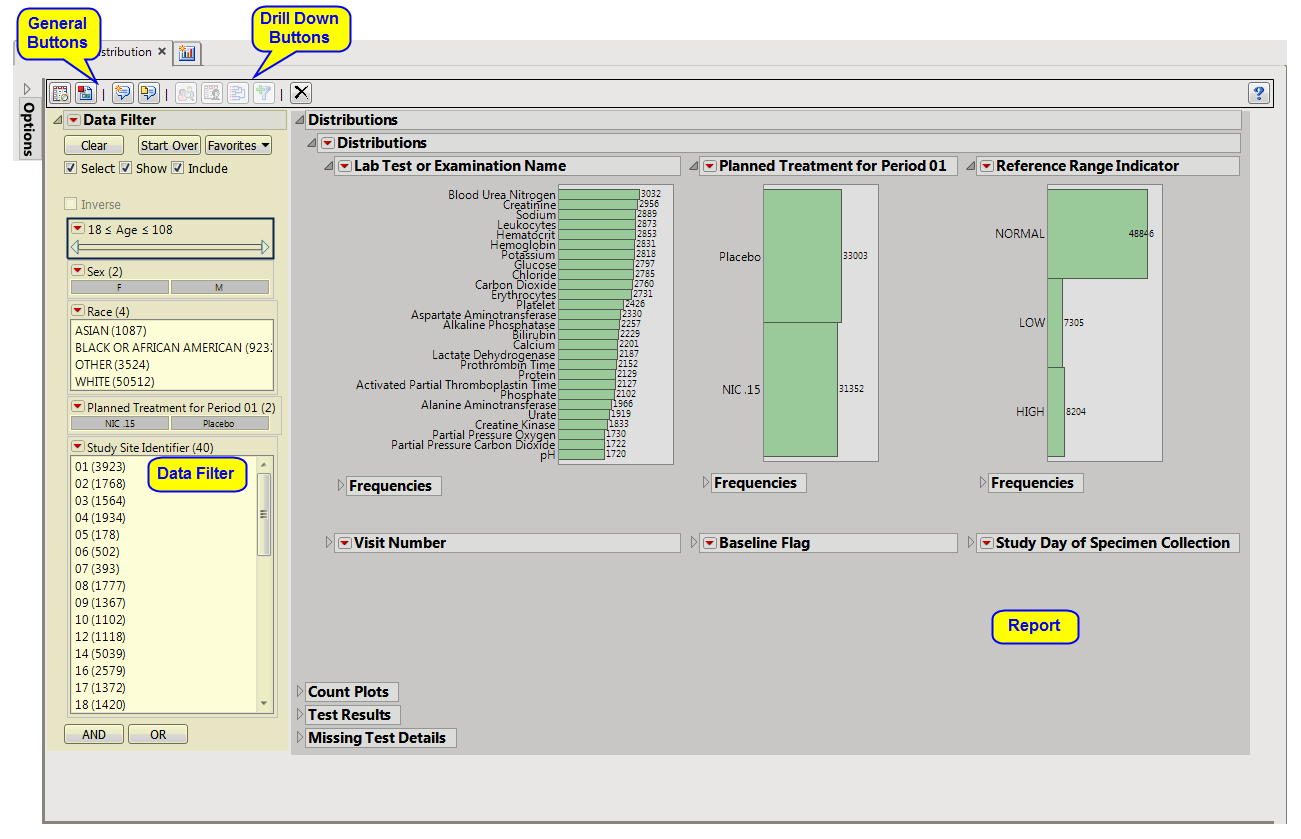This report compares distributions of Findings and demographic variables across treatment arms. Refer to the Findings Distribution requirements description for more information.
Note: JMP Clinical uses a special protocol for data including non-unique Findings test names. Refer to How does JMP Clinical handle non-unique Findings test names? for more information.
Note: Refer to Distribution Reports for a description of the general analysis performed by the JMP Clinical distribution reports.
Running Findings Distribution for Nicardipine using default settings generates the Report shown below.
The Report contains the following sections:
|
•
|
Distributions: Contains Histograms to display the distribution of Findings tests taken during the study and other relevant variables for the selected Findings domain.
|
|
•
|
Count Plots: Contains graphs for each test to display measurement counts within categories of the Reference Range Indicator variable. This tab is displayed only if the xxNRIND variable is present in the Findings domain data (typically the LB domain).
|
|
•
|
Test Results: Contains One-way Analyses ( ANOVA) for each test that has numeric measurement results (xxSTRESN values), Contingency Analyses for each Findings test that has character results (xxSTRESC values but missing xxSTRESN values), or both.
|
|
•
|
Missing Test Details: Contains tables displaying subject counts for tests that were either not recorded, or that were recorded but have missing measurement values (of xxSTRESN and/or xxSTRESC). If all subjects had nonmissing recorded test measurements for all tests, this tab is not shown.
|
This enables you to subset subjects based on demographic characteristics and study site. Refer to Data Filter for more information.
|
•
|
Profile Subjects: Select subjects and click
|
|
•
|
Show Subjects: Select subjects and click
|
|
•
|
Cluster Subjects: Select subjects and click
|
|
•
|
Demographic Counts: Select subjects and click
|
|
•
|
Click
|
|
•
|
Click
|
|
•
|
Click
|
|
•
|
Click
|
|
•
|
Click the arrow to reopen the completed report dialog used to generate this output.
|
|
•
|
Click the gray border to the left of the Options tab to open a dynamic report navigator that lists all of the reports in the review. Refer to Report Navigator for more information.
|
